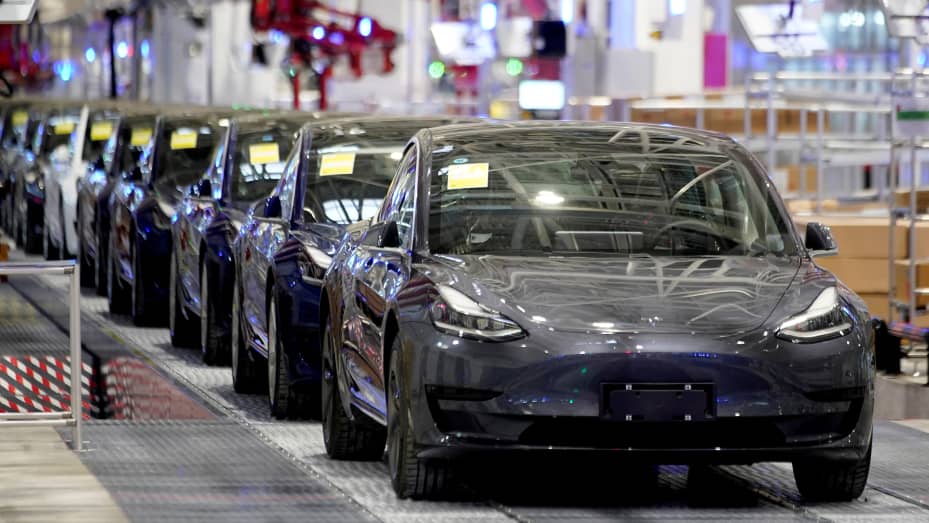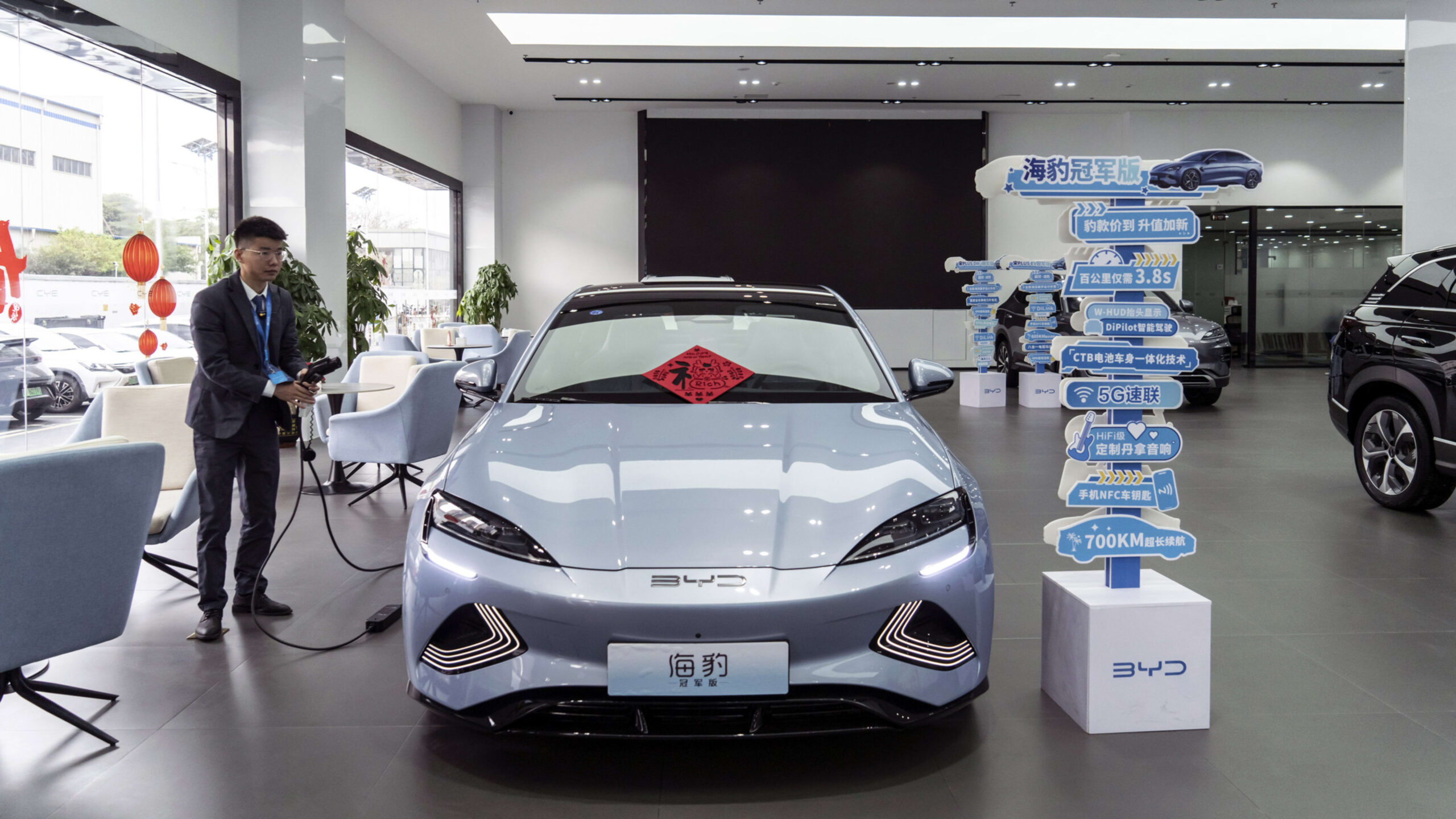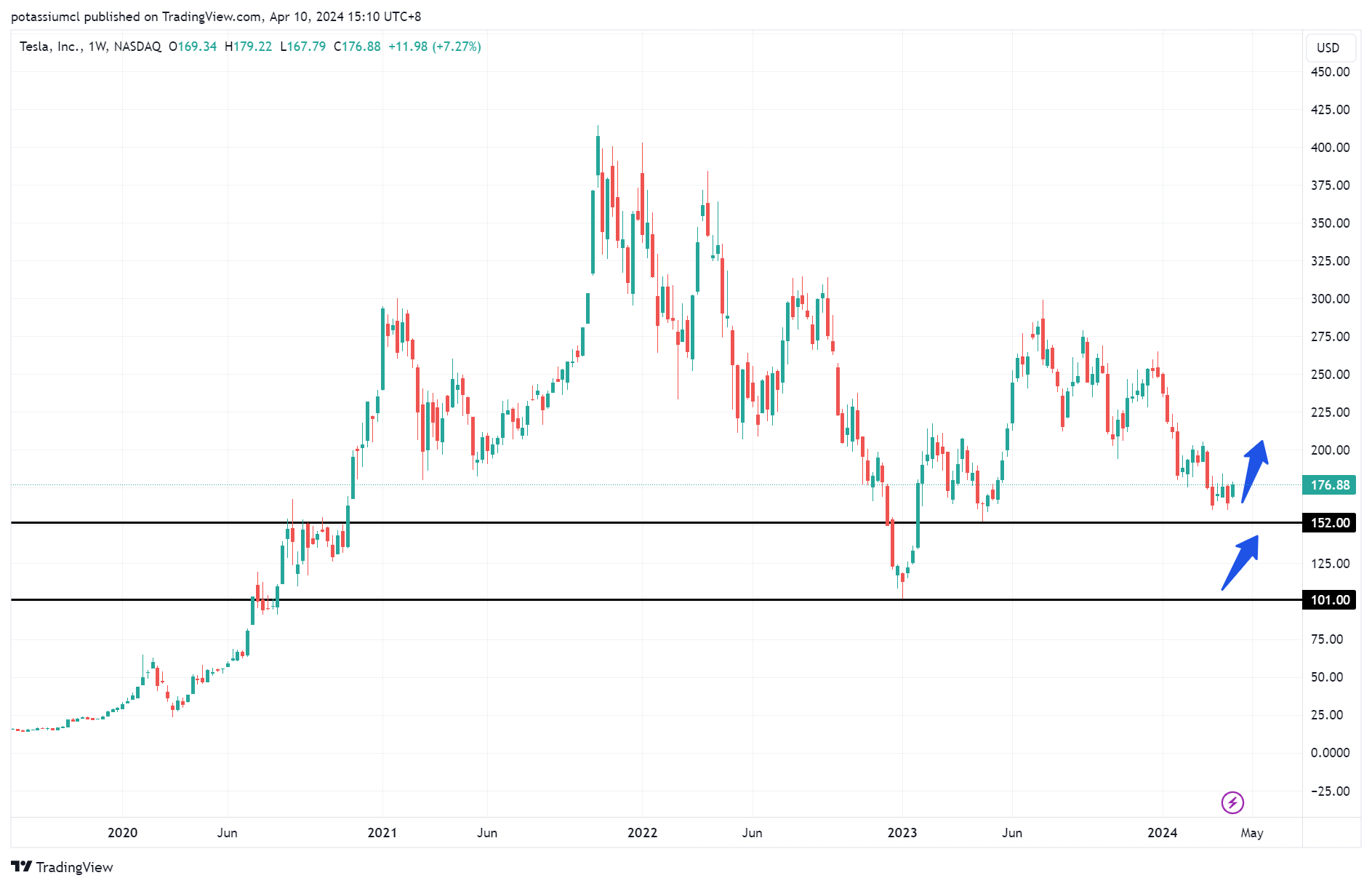
Elon Musk and the troubles ahead
Phoebe Goh
11 min read
In recent months, Tesla, Elon Musk’s golden child, has encountered significant challenges. This Tuesday marked a notable downturn in the electric vehicle producer’s first-quarter delivery figures, dropping well beneath the most conservative Wall Street projections. Compared to the prior quarter, Tesla’s first-quarter deliveries saw a 20% decrease and an over 8% reduction from the same period last year. This denotes the firm’s initial sales drop on a year-on-year basis since 2020.
Tesla attributed its delivery decline to the production acceleration of its revamped Model 3, an arson incident at its Berlin factory, and supply chain disruptions due to the Red Sea conflict, as per a press statement. On Tuesday, Tesla’s shares fell over 5% and have seen a nearly 30% drop in the last year.
Tesla’s first quarter has been described as a “complete catastrophe” and a “nightmare.”. The car manufacturer is dealing with growing competition in the Chinese electric-vehicle market, particularly from BYD, which is competing with Tesla for the top spot in EV sales. It has been suggested that the company might face “more challenging times” if faith among investors is not restored.
In the US, consumer demand for Musk’s company is waning, seemingly due to growing annoyance with Musk’s behaviour. A recent study from the market intelligence firm Calibre showed that the percentage of surveyed individuals considering purchasing a Tesla dropped to 31% in February, a significant decrease from a peak of 70% in November 2021.
Musk has been the face of Tesla for nearly two decades, sharing a vision of creating luxury electric cars that attract eco-conscious, affluent clientele. The profits from these sales would then be used to produce an affordable car for the masses. Musk’s 2006 “secret Tesla Motors master plan” described this approach: entering the market with high-end products and then quickly transitioning towards increased volume and decreased prices with each new model.
This strategy seemed to be progressing until recently, when Musk introduced an economical electric vehicle as a solution to Tesla’s growth obstacles, stating that the development was well underway.
However, the situation appears uncertain now. As per a Reuters report on April 5, Tesla had abandoned its purported Model 2 in favour of a fully self-driving “robotaxi” built on the same vehicle platform. Despite his initial denial on social media, Musk’s subsequent posts seemed to confirm a strategic shift akin to the one reported. He guaranteed a robotaxi reveal on August 8 and responded to a post suggesting that Tesla was diverting more resources to this field.
These developments could be seen as a departure from Tesla’s founding principles and a significant aspect of its appeal to certain customers. Alternatively, it could be perceived as Tesla inevitably adopting a technology that could revolutionise the entire industry. However, it would be hard to deny the slew of problems Musk is facing today.
Lack of growth in Tesla sales
Tesla Inc.’s notably low quarterly sales figures this week raise a critical question for investors: If Tesla’s era of rapid growth is ending, what is the actual worth of Elon Musk’s company’s shares?
The concern is well-founded. In the first quarter, Tesla sold fewer cars than Wall Street had anticipated by a significant margin. This discrepancy prompts one to question the extent to which the electric vehicle titan’s demand issues are reflected in its overly optimistic revenue and earnings growth projections for the coming years.
It’s unclear where Tesla’s next growth phase will come from, whether it’s EVs or other projects. To command a premium multiple, a company needs either excellent visibility of earnings or a compelling narrative about why those earnings will materialise in the future, neither of which Tesla currently has.
Concerns about Tesla’s growth have become so acute that a report on Friday suggested the company was abandoning its plans for a low-cost EV, which was thought to be crucial to solving its demand issues. This report caused the stock to plummet over 6%. Musk quickly denied the story on his social media platform, X, mitigating some of the decline, but it still remained the largest drag on the S&P 500 that day. After the market closed, Musk posted on X that the company would unveil its robotaxi on August 8, sparking a rally in after-market trading.
Tesla needs a $25,000 compact vehicle to compete with the numerous $25,000 EVs being launched. However, a heavy focus on a robotaxi vehicle at this point could be extremely risky.
Sales shock
Concerns have been raised about Tesla’s share prices potentially falling further if the company fails to promptly restore its unit volume and revenue growth. This outcome could pose a risk to Tesla’s stock market capitalization, especially if it loses its status as a hyper-growth company.
In the first quarter, Tesla sold approximately 387,000 cars, which is significantly less than the average analyst expectation of about 449,000. This shortfall will likely necessitate downward adjustments of profit estimates, which have already been reduced by more than half in a year. It also suggests that Tesla may face a second consecutive year of declining annual earnings. Analysts now predict that Tesla will not surpass its 2022 profitability level until 2026.

Despite these issues, Tesla shares are not considered cheap. With a forward earnings multiple of 59, Tesla is the most expensive among the Magnificent 7 group of big tech companies. In comparison, Nvidia Corp. trades at a multiple of around 36, and Amazon.com Inc. stands at 45. Despite this, Tesla has the lowest growth estimates for this year among the three companies, and its stock is the largest decliner in the Bloomberg Magnificent 7 Price Return Index in 2024.
There’s a fair chance that Tesla’s revenue could significantly decline in the first quarter, potentially causing even the most optimistic investors to reassess their stance. On average, analysts anticipate a modest decline of approximately 0.6%.
The surprise on Wall Street about Tesla’s struggles seems to indicate a lack of understanding about the company’s evolving situation. While Tesla had flagged a slowing pace of demand in October of the previous year, the resulting reactions indicate that few people truly comprehended the rate of this slowdown.
Analysts were aware of the declining growth in the electric vehicle market, but they underestimated the extent to which this would influence sales in the last quarter.
Affordability compared to China’s BYD
A significant challenge has emerged to Tesla’s original strategy, as the company is no longer leading the race in terms of affordable electric vehicles (EVs). This shift has become particularly apparent with the rise of China’s BYD. BYD, a formidable competitor, temporarily eclipsed Tesla, claiming the title of the world’s largest EV manufacturer at the end of last year.
BYD’s strategy, which appears to be paying off, consists of offering small, efficient electric cars at a comparatively low price point, around $10,000 each, in its home market, China. This contrasts with Tesla’s approach, which initially focused on luxury electric vehicles, with plans to use the profits from these sales to produce a more affordable vehicle for the wider market.
However, Tesla’s vision of an affordable mass-market EV is being realized by BYD faster than by Tesla itself. The Chinese automaker’s vehicles, while not as luxurious or high-tech as Tesla’s, serve the purpose of providing cost-effective and eco-friendly transportation to a large customer base.
Notably, BYD has not yet penetrated the US market. However, it has been steadily expanding its presence in Europe, a region where Tesla was once the uncontested leader in the EV sector. This expansion into Europe represents BYD’s ambition to become a global player in the EV market, directly challenging Tesla’s international dominance.
This shift in the landscape of affordable EVs signifies a significant threat to Tesla’s market position and underscores the urgency for the company to reconsider and revise its strategy. With increasing competition, particularly from manufacturers offering lower-cost alternatives, Tesla’s plans for growth and market dominance in the EV sector are now being seriously tested.

Issue of margins
Another key challenge is the issue of profit margins. The rise of BYD and its inexpensive electric cars, combined with seemingly decreased demand from Tesla’s customer base—potentially a result of Musk’s controversial behaviour on social media—has necessitated substantial cost-cutting measures by Tesla. To maintain profitability, the company has had to reduce costs wherever possible.
Moreover, Tesla is also seeking to leverage its technological advancements to create new revenue streams. A prime example of this is the company’s “Full Self-Driving (Supervised)” package. This add-on, which enables semi-autonomous driving capabilities in Tesla cars, costs an extra $12,000 on top of the vehicle’s original price. This significant upcharge makes semi-autonomous vehicles far more profitable than their traditional counterparts, such as family sedans.
Therefore, despite the challenges, Tesla is making strategic efforts to maximise its profit margins and maintain its financial viability in the face of growing competition and changing market dynamics.
What exactly is Musk’s ability to deliver a truly driverless car?
Persistent questions continue to surround Elon Musk’s ability to bring a fully self-driving car to market. Musk has been making promises about the imminent arrival of driverless cars since as far back as 2016. However, despite his optimistic forecasts and the significant technological advancements Tesla has achieved during this time, a completely autonomous vehicle has yet to materialise.
This absence of a fully self-driving offering has been particularly noticeable for customers who have chosen to invest in the self-driving package. This package, notably more expensive than the standard vehicle purchase, holds the promise of a higher level of autonomy and sophistication in driving technology. Yet, even with this investment, customers are still instructed to maintain an active role in the driving process. They are expected to keep their eyes constantly on the road and their hands on the wheel at all times, which contradicts the concept of a truly ‘driverless’ experience.
The inability to deliver a fully autonomous vehicle despite years of promises and the significant financial investments made by customers has led to an increase in scepticism. Doubts are growing about Musk’s capacity to deliver on this aspect of his ambitious vision for Tesla. This situation not only impacts customer trust and satisfaction but also has broader implications for Tesla’s reputation in the market as a leader in innovative automotive technology.
As the race to develop and commercialise autonomous vehicles intensifies, Tesla’s continued delay in delivering a fully self-driving car could potentially affect the company’s competitive position. Hence, the question of Musk’s ability to fulfil his promise of a truly driverless car is not just a matter of technological achievement but also a crucial factor in Tesla’s future growth and success in the evolving automotive industry.
Musk’s recent standoff with Brazil’s Supreme Court
Elon Musk’s disagreement with Brazilian authorities escalated as a Supreme Court judge initiated an inquiry into the entrepreneur following his announcement to reactivate blocked social media accounts on his platform, X. Musk contested the blockage that Justice Alexandre de Moraes had ordered, claiming it to be unconstitutional and calling for the judge’s resignation. Musk criticised Moraes on X, accusing him of betraying Brazil’s constitution and people.
In response to Musk’s actions, Moraes included him in an ongoing investigation into the spread of fake news on social media and opened an inquiry into a possible obstruction of justice. He reiterated that X must obey all court orders, including maintaining the block on certain profiles. Should X fail to comply, it faces a daily fine of 100,000 reais ($19,740).
This situation has prompted Brazil’s government to express support for Moraes, with Solicitor General Jorge Messias calling for the regulation of social media networks to prevent foreign-owned platforms from violating Brazilian laws. The incident comes on the heels of Moraes also ordering an investigation last year into executives at Telegram and Google over a campaign criticising a proposed internet regulation bill.
The multitude of challenges Musk has been facing in recent months does spell trouble not just for him but for his supporters as well. We can’t help but wonder about the longevity of his empire if he is unable to find viable solutions for each of these problems. In any case, we can only wait and see if his genius mind can help strengthen this Musk empire again soon.
A Trader’s View
Let us do something interesting this time around. Rather than the usual analysis on Forex only, shall we also take a look at Tesla’s stock using technical analysis?
Below is the Tesla chart for the weekly timeframe. Usually for stocks and shares, I prefer to use a weekly timeframe for better analysis.

As we can see, Tesla has been declining since 2022, then hit a rebound around the price of 101.00 in 2023 and came back down again to 176.88 currently. We are currently approaching a significant support zone. 101.00 to 152.00 region. As long as the support holds, and the Price Action in the support zone shows signs of strong bullishness, there is a high chance that the price will rebound. I think that the fundamental analysis of a stock or share is very important. A technical analysis is an add-on, and I personally think that you should not just analyse stocks and shares purely based on technical analysis.
Additionally, I would like to share with you an interesting forex pair. That will be USDJPY.
You will know why when you see the chart below.

This is the weekly chart of USDJPY. As we can see, a new high is created. The recent CPI for the US roses resulted in the strengthening of USD. It seems like this pair has a high chance to climb further after the break out.
Aaron Kuan

















